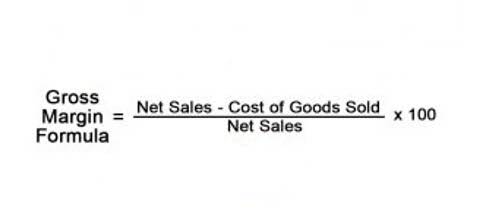Pas encore d'identifiant ?
Cost of Goods Sold COGS: Definition and How to Calculate It

The gross margin, resulting from the LIFO periodic cost allocations of $9,360, is shown in Figure 10.10. The gross margin, resulting from the FIFO periodic cost allocations of $7,200, is shown in Figure 10.8. Learn how to accurately determine your product costs with our guide on calculating the cost of goods available for sale, including inventory methods. Manufacturers have to know what inventory they have ready for customers too. Their calculation is a little different because they don’t typically purchase goods from vendors. They produce it, so a manufacturer’s cost of goods available formula would be calculated by adding the beginning inventory with the amount produced during the period.
What’s included in cost of goods sold?
Utilizing our cost of goods sold calculator, we aim to help you assess the total cost incurred of producing and selling goods. For more detailed analysis, explore our inventory turnover calculator and margin calculator. Cost of goods sold is an important number for business owners and managers to track. If you don’t know your COGS and break-even point, you don’t know if you’re making or losing money.
Comparing the WAC Method under the Periodic and Perpetual Inventory Systems
Companies continuously seek ways to optimize operations to maintain competitive pricing and healthy profit margins. Notice that purchases and production might not be the same throughout the year, since purchase cost and production cost might vary. But at the end, the total cost of purchases and production are added to beginning inventory cost to give cost of goods available for sale. ABC International has $1,000,000 of sellable inventory on hand at the beginning of January. During the month, it acquires $750,000 of merchandise and pays $15,000 in freight costs to ship the merchandise from suppliers to its warehouse.
Cost of Goods Sold Template
Put simply, it is the total cost of the produced goods that are saleable at the beginning of a new accounting period. The cost of goods sold Calculator allows you to calculate the total recorded cost of beginning finished goods/merchandise inventory in a defined accounting period. Conversely, the Last-In, First-Out method assumes that the most recently acquired items are the first to be sold. LIFO assigns the cost of the newest inventory to the cost of goods sold, which can be beneficial for tax purposes in times of inflation, as it typically results in a higher cost of goods sold and a lower taxable income. However, LIFO is not widely used globally and is not permitted under International Financial Reporting Standards (IFRS).
You’re our first priority.Every time.

Under the periodic inventory system, the ending inventory balance is then subtracted from the cost of goods available for sale to arrive at the cost of goods sold (which appears in the income statement). There are four methods that a company can use when recording its inventory sold during a period. During periods of rising prices, goods with higher costs are sold first, leading to a higher COGS amount. If a cost is general for your business, like rent, a new machine, or common marketing costs, it isn’t a cost 100% dedicated to a specific item. For example, assume that a company purchased materials to produce four units of their goods.

What Is Cost of Goods Sold (COGS)?
Understanding your company’s COGS is an important step on the path to understanding its overall health. While informative on it’s own, COGS is also a critical input (or sidekick) to other key performance metrics such as gross profit, operating expenses, overhead costs, and variable costs. Figure 10.14 shows the gross margin, resulting from the specific identification perpetual cost allocations of $7,260.
Get Any Financial Question Answered

This method is more common in larger businesses or those with high sales volume, where the benefits of immediate inventory tracking justify the higher cost of system maintenance and implementation. Cost of goods sold is the direct cost of producing a good, which includes the cost of the materials and labor used to create the good. COGS directly impacts a company’s profits as COGS is subtracted from revenue. If a company can reduce its COGS through better deals with suppliers or through more efficiency in the production process, it can be more profitable.
Why Is Cost of Goods Sold (COGS) Important?
- These costs will fall below the gross profit line under the selling, general and administrative (SG&A) expense section.
- You use the cost of goods available for sale formula to help calculate the cost of goods sold, which you will eventually use to calculate the profit that your company is making.
- Regardless of which cost assumption is chosen, recording inventory sales using the perpetual method involves recording both the revenue and the cost from the transaction for each individual sale.
- With this method, companies add up the total cost of goods purchased or produced during a specified time.
At the time of the second sale of 180 units, the FIFO assumption directs the company to cost out the last 30 units of the beginning inventory, plus 150 of the units that had been purchased for $27. Thus, after two sales, there remained 75 units of inventory that had cost the company $27 each. Ending inventory was made up of 75 units at $27 each, and 210 units at $33 each, for a total FIFO perpetual ending inventory value of $8,955. Journal entries are not shown, but the following discussion provides the information that would be used in recording the necessary journal entries. Each time a product is sold, a revenue entry would be made to record the sales revenue and the corresponding accounts receivable or cash from the sale. The Weighted Average Cost method smooths out price fluctuations over time by averaging the cost of inventory items.
Cost of Goods Sold vs. Operating Expenses
- If a company can reduce its COGS through better deals with suppliers or through more efficiency in the production process, it can be more profitable.
- Under the periodic inventory system, the ending inventory balance is then subtracted from the cost of goods available for sale to arrive at the cost of goods sold (which appears in the income statement).
- Finally, the business’s inventory value subtracts from the beginning value and costs.
- Businesses that use the Square retail POS system have quick access to this information on the Square Dashboard with analytics, inventory, and other reporting tools.
These UPC codes identify specific products but are not specific to the particular batch of goods that were produced. This more specific information allows better control, greater accountability, increased efficiency, and overall quality monitoring of goods in inventory. The technology advancements that are available for perpetual inventory systems make it nearly impossible for businesses to choose periodic inventory and forego the competitive advantages that the technology offers.

It is easy to use and will save a lot of your time that you might spend in manual calculations. You should make sure that you do not add them to the calculation of the cost of goods available for sale. If it is not possible for you to manually count the number of goods, this can be done by estimating the percentage of damaged and outdated goods in order to get more accurate results. Let’s take a look at the other factors that have an impact on the cost of goods available for sale calculation.